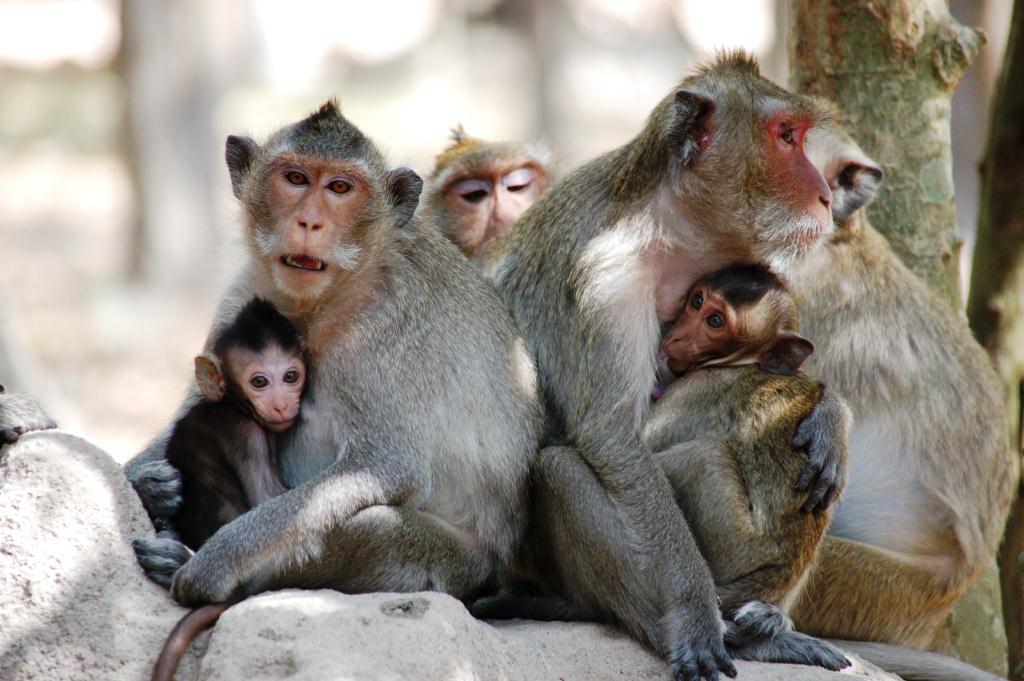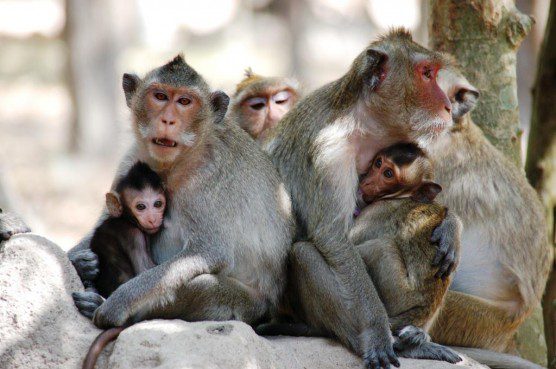U.S. primate import statistics for 2012

Last fall, we got a surprise package. Actually seven of them. They were boxes of papers that were the result of a Freedom of Information Act (FOIA) request that IPPL CEO Shirley McGreal had submitted… four years earlier.

IPPL recently received seven boxes–2,795 pages–of four-year-old primate import documents from the CDC, all heavily redacted.
Shirley had wanted to know more precise figures about primate imports into the U.S. So she tried to get information from:
1) Customs, now part of the Department of Homeland Security. “They refused to provide IPPL with any information at all,” says Shirley. “They claimed that only animal importers and their attorneys could access the information. Customs supposedly clears incoming shipments.”
2) The Centers for Disease Control. They are responsible for inspecting imported primates for health conditions and mortality. “On January 14, 2009, I filed a request for reports on incoming primate shipments during 2008. We submitted the appropriate paperwork to the government and waited. And waited. And waited,” says Shirley.
When we finally got a response on October 11, 2012, we were disheartened to see how many trees had been sacrificed for the sake of providing so little information: almost every page—out of the 2,795 pages that had been sent to us—had all the interesting information blanked out. “No monkey species, no monkey numbers, no names of shippers or airlines or importers,” says Shirley. “Nothing useful at all in the thousands of papers provided.”
On rare occasions, the censor left something behind. For example, if you didn’t know that “cynos” is a shorthand term for “long-tailed macaques” (a.k.a. crab-eating macaques, a.k.a. Macaca fascicularis, formerly known as Macaca cynomolgus), you might let stand the mysterious phrase “120 CYNOS,” not realizing that you have let slip the fact that the shipment in question deals with 120 long-tailed macaques, the primate most commonly used in research.
3) The U.S. Fish and Wildlife Service. Fortunately, Shirley has been able to obtain USFWS data—actual current data (not a heap of five-year-old redacted documents) about imports of primates into the U.S. “The USFWS does not inspect all incoming military shipments. But we did get considerable information gathered from import declarations, which may not include all shipments but is nonetheless very useful,” says Shirley.
These are the preliminary import figures for 2012. And we’re happy to provide the following summary statistics for you. (We’re actually happy to provide the entire data set, too; just contact us at info@ippl.org.)

Long-tailed macaques like these are the most commonly imported primate into the U.S.
U.S. Primate Imports for 2012
A total of 17,915 nonhuman primates were imported into the U.S. in 2012.
This was a decrease of only about one percent from 2011 levels.
| Common Name | Scientific Name | Number | Percent |
| crab-eating macaque | Macaca fascicularis | 15,110 | 84.3 |
| rhesus macaque | Macaca mulatta | 1,360 | 7.6 |
| green monkey | Chlorocebus sabaeus | 1,154 | 6.4 |
| squirrel monkey | Saimiri sciureus | 136 | 0.8 |
| southern pig-tailed macaque | Macaca nemestrina | 132 | 0.7 |
| tufted capuchin | Cebus apella | 7 | 0.04 |
| Allen’s swamp monkey | Allenopithecus nigroviridis | 4 | 0.02 |
| mandrill | Mandrillus sphinx | 4 | 0.02 |
| hamadryas baboon | Papio hamadryas | 4 | 0.02 |
| pygmy slow loris | Nycticebus pygmaeus | 3 | 0.01 |
| western gorilla | Gorilla gorilla | 1 | 0.01 |
Countries of origin.
These countries supplied at least 100 primates to the U.S.
| Country of Origin | Number | Percent |
| China | 10,142 | 55.9 |
| Mauritius | 3,335 | 18.4 |
| Cambodia | 1,444 | 8.0 |
| Vietnam | 1,440 | 7.9 |
| Saint Kitts and Nevis | 1,154 | 6.4 |
| Indonesia | 241 | 1.3 |
| Guyana | 112 | 0.62 |
Source of the animals.
Note that claims of captive birth are hard to prove or dispute, but IPPL has received reports of wild-caught primates being shipped using false declarations of captive birth.
|
Source |
Number | Percent |
| Wild caught | 1,399 | 7.8 |
| Born in captivity (F1+ generations) | 4,677 | 26.1 |
| Captive bred | 11,839 | 66.1 |
Primary ports of entry.
These ports received at least 100 primates.
| Port | Number |
| Los Angeles, CA | 7,930 |
| Chicago, IL | 4,775 |
| New York, NY | 3,471 |
| Miami, FL | 1,295 |
| San Francisco, CA | 436 |
U.S. importers of over 500 primates.
| Importer | Number |
| COVANCE RESEARCH PRODUCTS, INC. | 7,135 |
| CHARLES RIVER LABORATORIES | 2,399 |
| CHARLES RIVER LABORATORIES, BRF | 1,599 |
| WORLDWIDE PRIMATES, INC. | 1,243 |
| SNBL USA LTD. | 1,216 |
| PRIMATE PRODUCTS, INC. | 1,086 |
| YALE UNIVERSITY SCHOOL OF MEDICINE | 990 |
| BUCKSHIRE CORPORATION | 514 |
Foreign exporters of over 500 primates.
| Exporter | Number |
| HUAZHENG LABORATORY ANIMAL BREEDING CENTER | 2,880 |
| BIOCULTURE MAURITIUS LTD. | 2,493 |
| GUANGXI WEMEI BIO-TECH CO. LTD. | 1,920 |
| GUANGZHOU BLOOMING SPRING BIOLOGICAL TECHNOLOGY DEVELOPMENT | 1,800 |
| KHI BIOSERVICES (GROUP) LTD. C/O NAFOVANNY (NAFOVANNY C/O KHI BIOSERVICES LTD. (GROUP)) | 1,320 |
| ST. KITTS BIOMEDICAL RESEARCH FOUNDATION | 990 |
| YUNNAN LABORATORY PRIMATE INC. | 890 |
| VANNY BIO-RESEARCH (CAMBODIA) CORPORATION LTD. | 828 |
| ANGKOR PRIMATES CENTER, INC. | 616 |
| BEIJING PULIYUAN TRADING LTD | 560 |


I wish mainstream mediawould pick up on this.